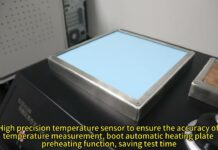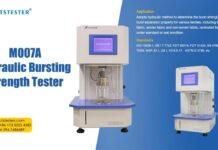Clarifier basics – How do clarifiers work I Clarifier design
Các câu hỏi, thắc mắc, thông tin liên quan đến sản phẩm được giới thiệu trong video dưới đây từ khâu mua sắm, lựa chọn, sử dụng, cài đặt hay thay thế, vui lòng liên hệ với INO Team để được hỗ trợ và tư vấn kịp thời.
– – – LƯU Ý – – -: Với những thiết bị không được liệt kê ở đây không có nghĩa là chúng tôi không hỗ trợ được bạn, công ty chúng tôi chuyên đề xuất giải pháp, tư vấn mua sắm và cung cấp thiết bị về cảm biến công nghiệp, đo lường và tự động hoá cho các công ty trong và ngoài nước.
Công ty TNHH Giải pháp và Công nghệ Đo lường INO, nhà cung cấp các thiết bị đo lường và tự động hóa công nghiệp.
3 Minute Water and Waste Water Video Tutorials by AET
Throughout history, sedimentation has served as a tried and true method for wastewater treatment. Gravity forces contaminants to settle downward in the surrounding liquid whereas clarified water can be removed separately. The same principle is used by wastewater treatment clarifiers: Large tanks provide enough retention time to slow water down and to separate out suspended particles.
Wastewater from aeration basins is usually entering the clarifier from a centrally located pipe. The entering wastewater is also known as the MLSS (mixed liquor suspended solids) which refers to the concentration of suspended solids from the activated sludge process. To slow down the incoming water its directed through a energy dissipating inlet and a feedwell.
Inside the clarifier solid contaminants will settle down to the bottom of the tank where it is collected by a scraper mechanism and removed by another centrally located pipe. The scraper mechanism arms rotate slowly along the clarifiers perimeter and are attached to a centrally located shaft which is powered by a drive system on the clarifier bridge. The removed sludge will either by recycled as RAS (return activated sludge) or wasted as WAS (waste activated sludge). The clarified water instead is released over overflow weirs on the top of the clarifier. In properly functioning clarifiers the overflow water looks already very clear. Fats, oil, grease and other floating substances are removed by a rotating skimmer on the water surface.
In some tanks, called tube settler or lamella clarifier tanks, there are additional inclined plates or channels inside the tank to help force solids to settle out of the mixture. (short break)
In many cases, flocculants or coagulants are applied to the wastewater before it reaches the clarification tank to make the sedimentation process more effective. The chemicals are usually added in mixing tanks with agitators, which provide a gentle stirring for even distribution of chemicals in the water.
One model for proper operation and evaluation of a clarifier is called the state point analysis. The SPA can be visualized in a diagram showing the balance between a solid concentration on the X-axis and the solid flux rate on the Y-axis. The solid flux rate describes the mass of solids passing through the clarifier in one hour and per m2 of clarifier surface. The diagram includes three curves: The settling curve of the particles, the overflow curve to represent the flow through the clarifier and the underflow curve to represent the RAS rate in the clarifier. The goal is to have the intersection of the overflow and underflow curve underneath the settling curve to allow enough time for solid settling. Furthermore the complete underflow curve must stay underneath the settling curve to allow enough time for sludge thickening and removal. Click on the above banner to learn more about the SPA method.
Web: www.ino.com.vn | Mail: info@ino.com.vn
Tel: (+84) 028 73000184 | Hotline: 0947200184
Website: http://www.ino.com.vn Website: http://www.ino.vn
Please visit INO YouTube Channel for more Video
https://www.youtube.com/inomeasure




















